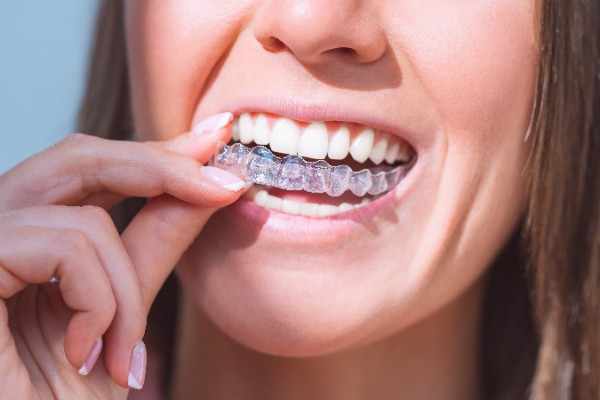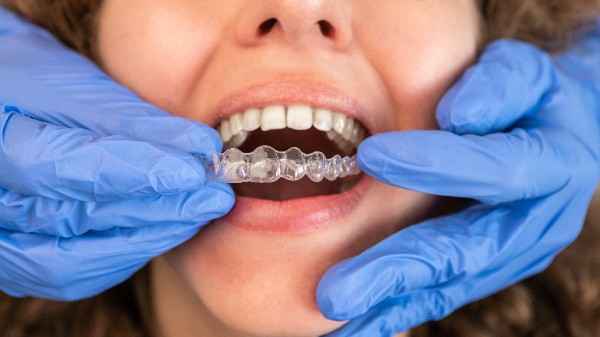Can Invisalign Treatment Continue After a Dental Crisis?
Clear aligners like Invisalign have transformed orthodontics with their discreet, removable design, making them a popular choice among both teens and adults. Their convenience and subtle appearance offer a modern alternative to traditional braces. However, unexpected dental issues such as trauma, infections, or sudden complications can interfere with even the most carefully planned treatments. This guide outlines how dental emergencies may impact your Invisalign progress and provides essential steps to help you navigate challenges and confidently continue your journey to a healthier, straighter smile.
Understanding Dental Crises and Their Impact on Invisalign

What Qualifies as a Dental Emergency?
Dental emergencies range in severity, but they typically involve situations that require immediate professional attention to relieve pain, stop bleeding, prevent infection, or save a tooth. Examples include:
- Knocked-out or dislodged teeth due to trauma
- Severe toothache or abscess
- Fractured or chipped teeth
- Damaged crowns, bridges, or veneers
- Gum infections with swelling or bleeding
Even though these may seem unrelated to your orthodontic treatment, they can significantly impact Invisalign progress especially if they change the shape or stability of your teeth.
How Invisalign Aligners Work
Invisalign Oxford aligners are designed to apply consistent, gentle pressure to guide teeth into new positions. Treatment progresses through a series of custom trays, each slightly different from the last. These aligners are fabricated based on detailed scans or impressions of your teeth, and the treatment plan is highly dependent on the integrity and predictability of your oral structure.
A dental emergency that alters your teeth whether by extraction, damage, or restorative work can throw off this progression. That’s why it’s essential to handle post-emergency care strategically.
Can Invisalign Continue After a Dental Crisis?
The Short Answer
Yes, in many cases, Invisalign treatment can continue after a dental emergency but the timeline and plan might need to be modified. The type and extent of the crisis largely determine the course of action.
Minor Emergencies: Minimal Interruption
If the emergency is relatively minor, such as a small chip, a cracked filling, or a localized gum infection, you may be able to continue your aligners with only minimal adjustments. Your orthodontist may choose to:
- Monitor your progress more closely
- Recommend temporary use of your most recent tray
- Order a new aligner if the current one no longer fits well
These small changes often won’t significantly impact your treatment timeline. That said, even minor issues should be reported promptly.
Major Emergencies: Treatment Pause or Plan Revision
More serious dental crises such as tooth loss, extractions, or implant placement will usually necessitate a pause in Invisalign treatment. These cases often require:
- Healing time (especially after extractions or surgery)
- Revised treatment plans
- New digital scans or impressions
- A new series of aligners tailored to your updated dental structure
The key here is patience and professional collaboration. Attempting to continue with ill-fitting trays can not only compromise progress but may cause further dental issues.
Steps to Take After a Dental Emergency
1. Seek Immediate Dental Care
Your first priority should be addressing the emergency itself. Pain, infection, or trauma should never be postponed for the sake of orthodontic continuity. Contact an emergency dentist in Oxford immediately to manage the crisis, whether it requires antibiotics, temporary fillings, or more involved interventions.
2. Communicate With Your Invisalign Provider
As soon as your dental emergency is stabilized, inform your Invisalign Oxford provider. They will need to:
- Reassess your teeth’s positioning and structure
- Evaluate the fit and usability of your current trays
- Determine whether new impressions or scans are necessary
This collaboration between your dentist and orthodontist is critical for preserving your treatment progress.
3. Wear Your Last Well-Fitting Aligner
Unless otherwise advised, continue wearing your most recent aligner that fits properly. This helps prevent your teeth from shifting out of position while your providers determine the next steps. If your trays don’t fit at all, your orthodontist may recommend switching to a previous tray or creating a holding retainer until a new treatment plan is in place.
4. Consider Interim Solutions
In some cases, temporary solutions such as bonding or temporary crowns can allow you to continue with Invisalign while awaiting permanent restorations. These quick fixes can maintain alignment and allow for continuity without long interruptions.
Real-World Experiences: How Common Are Setbacks?
According to a 2022 study by the British Orthodontic Society, approximately 1 in 5 patients undergoing Invisalign treatment experienced some form of treatment disruption most commonly from dental trauma, gum disease, or restorative procedures.
Here’s a comparison of common dental crises and their impact on Invisalign:
| Dental Crisis | Can Invisalign Continue? | Requires New Trays? |
| Minor enamel chip | Yes | Rarely |
| Tooth extraction | Temporarily paused | Yes |
| New crown or bridge fitted | Case-dependent | Often |
| Dental implant placement | Temporarily paused | Yes |
| Root canal | Sometimes | Possibly |
| Lost aligner during emergency | No (needs replacement) | Yes |
Unique Considerations for Long-Term Treatment Success
Address Underlying Health Issues
Sometimes a dental emergency reveals deeper problems such as periodontal disease or weakened enamel. It’s wise to resolve these thoroughly before resuming Invisalign. Aligners won’t work properly if your foundation, your gums and bone is compromised.
Adjust Your Expectations
A dental setback might extend your treatment timeline slightly, especially if aligners need to be remade. However, the priority is a healthy, lasting result. Rushing back into treatment without resolving the emergency can create long-term complications.
Invest in Preventive Measures
To minimize future disruptions, consider:
- Wearing a mouthguard during sports or physical activities
- Maintaining excellent oral hygiene
- Scheduling regular dental cleanings even during orthodontic care
These habits can prevent common emergencies like trauma or gum infections that derail treatment.
Tips for Smoother Recovery and Transition Back to Invisalign
Maintain Transparent Communication
Keep your providers in the loop. Even seemingly small updates like a loose filling or mild discomfort can inform your orthodontist’s recommendations and help prevent future issues.
Resume Treatment Promptly
Once cleared by your dentist, don’t delay getting back into your aligners. Teeth can begin to shift back in a matter of days or weeks, especially if left without guidance. Swift re-engagement is key to preserving progress.

Embrace Adaptability
Your smile journey may include some detours. Trust your orthodontic team to adapt your treatment safely. Invisalign is an inherently flexible part of its design that allows for mid-course corrections and refinements as needed.
Conclusion
A dental crisis during Invisalign doesn’t have to derail your orthodontic journey. With timely care and coordinated support, most setbacks can be managed effectively. The key is to prioritize immediate dental attention, keep your Invisalign provider informed, and stay flexible with your treatment plan. Whether your issue is minor or more complex, there are always solutions to help you stay on track. At EDO, we’re here to support you through every step ensuring your smile journey continues smoothly, safely, and with confidence, no matter what challenges arise along the way.
See More: Invisalign

